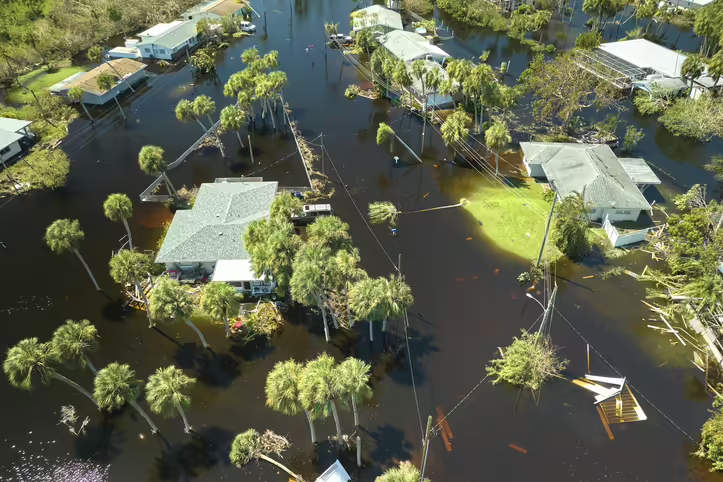
Gulf Coast states are no strangers to storm activity. On average, about 10 tropical storms develop annually over nearby bodies of water. While some never make landfall, about 60% become hurricanes that impact coastlines from Texas to Maine. Most recently, Hurricane Debby, a Category 1 storm, landed in Florida and South Carolina in early August 2024.
Hurricanes are characterized not just by wind speeds and storm surges but also by the damage they cause. There are five categories in total, and they range from mild to severe. Depending on the category, hurricanes can cause everything from minor property damage to catastrophic injury and death.
What are the five categories of hurricanes exactly, and what do they mean in practical terms? Learn more in this guide.
Category 1
The damage these hurricanes cause is considered minimal and primarily includes damage to landscaping, unanchored homes, and small watercraft. Category 1 storms bring winds of 74 to 95 mph and storm surges of three to five feet that could cause minor pier damage and inundate low-lying coastal roads.
Category 2
Category 2 consists of moderate hurricanes featuring wind speeds of 96 to 110 mph and storm surges of six to eight feet. These storms could cause:
- Significant damage to landscaping, mobile homes, and signage
- Fallen trees
- Damage to roofs and windows, although buildings will remain largely intact
- Flooding in marinas
- Pier damage
Additionally, Category 2 hurricanes can cause flood water to build up on coastal roads. This can cut off escape routes within two to four hours of the hurricane center landing.
Category 3
This category is characterized by extensive damage, starting with considerable destruction of foliage and large trees getting blown over. Poorly constructed signs are unlikely to survive. With winds of 111 to 130 mph, mobile homes may be destroyed, and small buildings could suffer structural damage.
Storm surges of nine to twelve feet might lead to flooding in flat areas five feet or less above sea level and as far inland as eight miles. This could cut off escape routes three to five hours before the storm center hits.
Flooding and waves may also batter and damage even large structures near the coast. It’s best to evacuate well in advance of any storm that’s Category 3 or higher to avoid congested roadways, car accidents, and the possibility of being trapped in a flood zone.
Category 4
Category 4 hurricanes are deemed extreme. With wind speeds of 131 to 155 mph and storm surges of 13 to 18 feet, it’s not hard to imagine why. You can expect the following to happen in Category 4 storms:
- Landscaping, including large trees, will be destroyed
- All signs will be destroyed
- Roofing, windows, and doors will suffer considerable damage
- Small homes are susceptible to complete roof failure
- Mobile homes are unlikely to survive
- Beaches will experience significant erosion
Additionally, Flood waters will damage the lower levels of coastal homes and extend to terrain as high as 10 feet above sea level. These storms require mass evacuations, including all residences within 500 feet of shoreline and single-story structures within two miles.
Category 5
With wind speeds over 155 mph and storm surges higher than 18 feet, this category of hurricane is aptly described as catastrophic. Most roofing will not withstand the onslaught, and small buildings may be completely flattened or blown away.
Structures within 500 yards of shore that are less than 15 feet above sea level will be destroyed as well. This storm calls for massive evacuations of low-lying residential areas within up to 10 miles of the shore.
The Importance Of Preparedness
Understanding hurricane categories is important. It can help you determine whether to shelter in place, leave your home for a nearby structure that offers greater protection, or risk car or motorcycle accidents to drive further inland.
When it comes to protecting yourself and your loved ones, you should always err on the side of caution. Make sure to follow all warnings and heed evacuation orders.
Contact the Undefeated Houston Personal Injury Lawyers from Zehl & Associates Injury & Accident Lawyers for Help Today
For more information, please contact our Undefeated Personal Injury attorneys in Texas at Zehl & Associates Injury & Accident Lawyers to schedule a free consultation today.
We proudly serve Harris County, Midland County, and throughout the state of Texas:
Zehl & Associates Injury & Accident Lawyers – Houston
2700 Post Oak Blvd #1000, Houston, TX 77056
(888) 603-3636
Open 24 hours
Zehl & Associates Injury & Accident Lawyers – Midland
306 W Wall St Suite 701, Midland, TX 79701
(432) 220-0000
Open 24 hours
Zehl & Associates Injury & Accident Lawyers – Houston
2700 Post Oak Blvd #1000, Houston, TX 77056
(888) 603-3636
29.73890263937774, -95.4612824423294
Open 24 hours

Zehl & Associates Injury & Accident Lawyers – Midland
306 W Wall St Suite 701, Midland, TX 79701
(432) 220-0000
31.99827039117601, -102.07752974593966
Open 24 hours